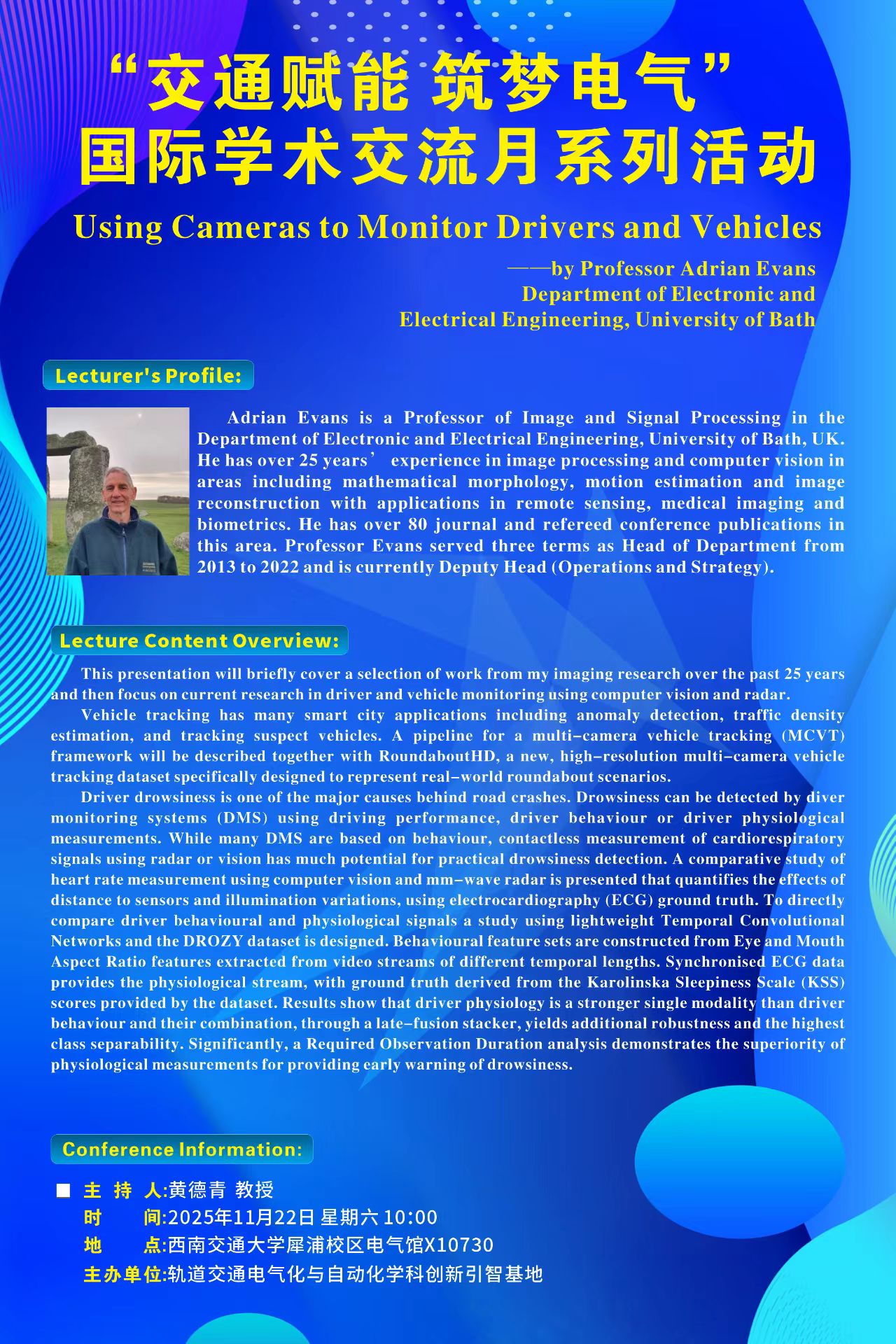Using Cameras to Monitor Drivers and Vehicles
Time : Nov 20, 2025 Browse the number :

Host: Prof. De-qing Huang
Time:10:00 a.m, Nov. 22nd, 2025
Place:X10730
Introduction:
This presentation will briefly cover a selection of work from my imaging research over the past 25 years and then focus on current research in driver and vehicle monitoring using computer vision and radar.
Vehicle tracking has many smart city applications including anomaly detection, traffic density estimation, and tracking suspect vehicles. A pipeline for a multi-camera vehicle tracking (MCVT) framework will be described together with RoundaboutHD, a new, high-resolution multi-camera vehicle tracking dataset specifically designed to represent real-world roundabout scenarios.
Driver drowsiness is one of the major causes behind road crashes. Drowsiness can be detected by diver monitoring systems (DMS) using driving performance, driver behaviour or driver physiological measurements. While many DMS are based on behaviour, contactless measurement of cardiorespiratory signals using radar or vision has much potential for practical drowsiness detection. A comparative study of heart rate measurement using computer vision and mm-wave radar is presented that quantifies the effects of distance to sensors and illumination variations, using electrocardiography (ECG) ground truth. To directly compare driver behavioural and physiological signals a study using lightweight Temporal Convolutional Networks and the DROZY dataset is designed. Behavioural feature sets are constructed from Eye and Mouth Aspect Ratio features extracted from video streams of different temporal lengths. Synchronised ECG data provides the physiological stream, with ground truth derived from the Karolinska Sleepiness Scale (KSS) scores provided by the dataset. Results show that driver physiology is a stronger single modality than driver behaviour and their combination, through a late-fusion stacker, yields additional robustness and the highest class separability. Significantly, a Required Observation Duration analysis demonstrates the superiority of physiological measurements for providing early warning of drowsiness.
Speaker:Adrian Evans
Adrian Evans is a Professor of Image and Signal Processing in the Department of Electronic and Electrical Engineering, University of Bath, UK. He has over 25 years’ experience in image processing and computer vision in areas including mathematical morphology, motion estimation and image reconstruction with applications in remote sensing, medical imaging and biometrics. He has over 80 journal and refereed conference publications in this area. Professor Evans served three terms as Head of Department from 2013 to 2022 and is currently Deputy Head (Operations and Strategy).

